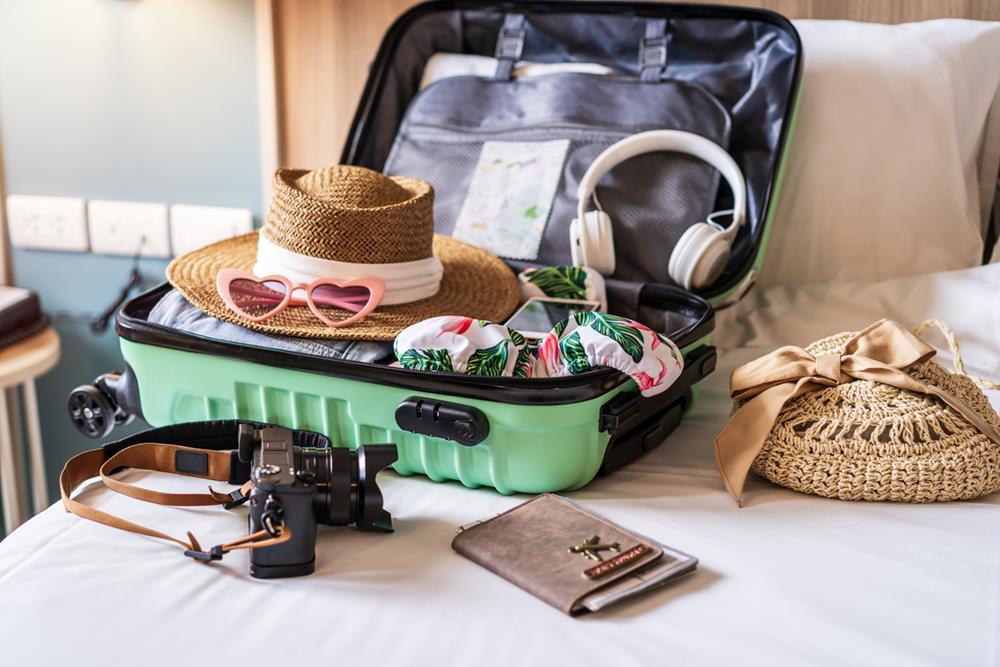Must-Have Travel Accessories for Exploring Texas

When exploring Texas's diverse landscapes, you'll need essential gear to stay safe and comfortable. Pack reliable navigation tools like Google Maps with offline downloads, broad-spectrum sunscreen, and a wide-brimmed hat for sun protection.
Don't forget a 3-liter hydration pack with electrolytes for desert areas and weather-appropriate clothing for Texas's variable climate. A detailed first-aid kit with cactus-spine tweezers will prepare you for unexpected situations.
Discover more must-have accessories below to fully experience the Lone Star State.
Essential Navigation Tools for Texas Road Trips
When venturing across the vast Lone Star State, reliable navigation tools become your most valuable travel companions. Google Maps and Waze excel in urban areas like Houston and Austin, providing real-time traffic updates and hazard alerts that'll save you precious vacation time.
For scenic routes through Hill Country or West Texas adventures, download Roadtrippers to discover unique stops along your journey. Don't overlook offline map downloads before heading to remote areas like Big Bend or Guadalupe Mountains, where cell service vanishes. Always check DriveTexas.org for the latest road closures and conditions before departing.
Smart travelers embrace paper-map redundancy alongside digital tools. Waterproof USGS topographic maps and a quality compass like the Suunto M-3 G help ensure you're never truly lost, even when batteries die. For extended backcountry excursions, consider a Garmin inReach for emergency communications.
Sun Protection Gear for the Texas Heat
Texas sunshine demands serious defense strategies alongside your navigation tools. Pack broad-spectrum SPF 30+ and reapply every two hours—a step many travelers forget. Don't rely solely on sunscreen; layer protection with lightweight, tightly woven long-sleeve clothing that covers arms and legs while keeping you cool.
Complete your sun armor with a wide-brimmed hat that shades your face and neck. Quality UV-protective eyewear isn't just fashionable—it's necessary to protect your eyes; look for sunglasses labeled 99–100% UV protection. With skin-cancer vigilance top of mind in Texas, these precautions are increasingly essential for travelers.
When outdoors, seek shade between 10 a.m. and 4 p.m. when UV rays are strongest. This multi-layered approach is particularly helpful in rural areas, where consistent sunscreen use can be lower than in big cities.
Hydration Solutions for Desert and Coastal Adventures
Staying properly hydrated while exploring Texas's diverse landscapes requires planning beyond just packing a bottle. When venturing into scorching deserts or humid coastal regions, use reusable hydration systems with electrolyte supplements to maintain fluid balance throughout your journey.
For recovery after intense heat exposure, prioritize rest, cool shade, and oral rehydration; seek medical care for heat-illness symptoms.
- A 3-liter insulated reservoir tucked inside your backpack, with the drinking tube clipped to your shoulder strap for hands-free sipping as you hike Big Bend's rugged trails.
- A collapsible 1-gallon container filled at treated sources (or water you've filtered/treated at basecamp), perfect for multi-day coastal excursions.
- Emergency contacts in your phone (park rangers, local clinics) and a quick reference to heat-illness signs—especially if traveling in remote areas where dehydration risks are elevated.
Weather-Appropriate Clothing for Texas Seasons
Packing weather-appropriate clothing for Texas's wildly variable climate can make or break your trip.
- In winter, light to medium layers suffice for most regions, with insulated outerwear needed only in northern areas.
- Spring demands versatile layering—tees under light sweaters—plus waterproof gear for frequent rain.
- Be prepared for severe weather, as tornadoes may develop in central and northern regions from April to June.
- Summer requires lightweight, breathable fabrics—prioritize sun protection with wide-brimmed hats and UPF shirts. Fall calls for adaptable layers as temperatures range from 90°F to 60°F.
Consider your destination: western Texas needs clothing for dry heat and cool nights, while eastern and coastal regions benefit from moisture-wicking materials to handle higher humidity year-round.
Safety and First Aid Supplies for Remote Areas
When venturing into Texas's remote territories—from the rugged Big Bend National Park to the vast expanses of West Texas—your first-aid kit is as important as your water supply.
- Pack thorough supplies including medications, wound-care items, and trauma supports tailored to the environment you'll explore. Before setting out, check contents and replace any expired or damaged items.
- A waterproof kit containing triple-antibiotic ointment, bandages, and emergency blankets nestled beside your backpack as the desert sun sets behind rugged canyons.
- SAM splints and elastic bandages securing an injured ankle while you await help beneath a lone mesquite tree.
- Tweezers extracting a cactus spine under the glow of a headlamp as stars blanket the Chihuahuan Desert sky.
Don't forget emergency communication devices for backcountry trips and practical disaster-readiness supplies for extreme weather that can strike unexpectedly across Texas.
Insect Defense for Outdoor Explorations
Texas's outdoor adventures demand strategic insect defense, as the state harbors an array of biting and stinging creatures that can quickly derail a perfect day. Pack EPA-registered repellents containing DEET or picaridin to help reduce the risk of vector-borne diseases such as West Nile (and, in limited contexts, Zika).
When exploring, wear lightweight, tightly woven clothing that physically blocks bites, especially during peak activity times. For fire ants, watch for mounds and avoid disturbing them; if managing pests on private property, choose the least-toxic options and follow label directions—do not treat public campsites.
Always carry topical analgesics for unexpected stings, and shake out clothing and shoes to prevent hidden spider or scorpion encounters. Be cautious during warm daylight hours when wasps and bees actively forage.
Remember that Imported Red Fire Ants can cause painful pustules—clean promptly and monitor for signs of infection.
Comfort Accessories for Long-Distance Travel
Long-distance travel across Texas's vast expanses calls for thoughtful comfort accessories that can make or break your journey. Invest in memory-foam cushions for your neck and lumbar region to prevent strain during those six-hour drives from Dallas to Big Bend.
Temperature-regulating fabrics in your travel clothing keep you comfortable as you shift between scorching highways and frigid air-conditioned rest stops. The growing travel-comfort market offers increasingly innovative solutions for long journeys.
- Contoured sleep masks blocking intense Texas sunlight while you nap in the passenger seat
- Compression socks gently supporting circulation as you cruise the endless Interstate 10
- Insulated water bottles that keep drinks cold through summer attractions
Don't underestimate these comfort essentials—they can turn exhausting road trips into enjoyable adventures.
Tech Essentials for Capturing Texas Memories
Beyond physical comfort, the right technology transforms how you document your Texas adventures. Invest in a quality camera system—a versatile mirrorless/DSLR paired with a 24–70mm zoom covers most travel scenarios, while a telephoto lens captures distant wildlife or architectural details.
Don't overlook essentials: a lightweight tripod stabilizes sunset shots, and a camera-clip system keeps gear accessible yet secure during hikes. Choose a durable camera bag that protects equipment while providing quick access. Mobile charging solutions help keep devices powered through long days, while wireless transfer lets you back up images to external SSDs or cloud storage immediately.
Pack microfiber cloths to keep lenses pristine in dusty conditions, and consider a compact external microphone to enhance videos of Texas's vibrant soundscapes.




